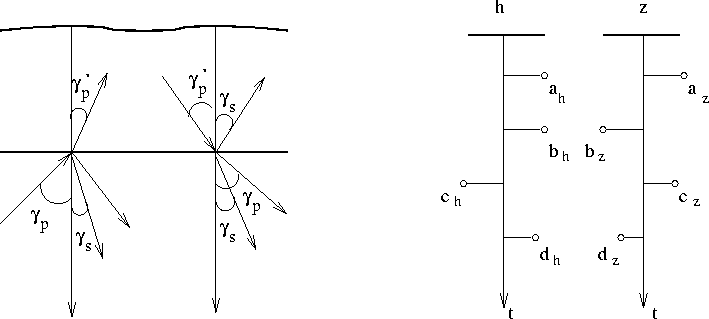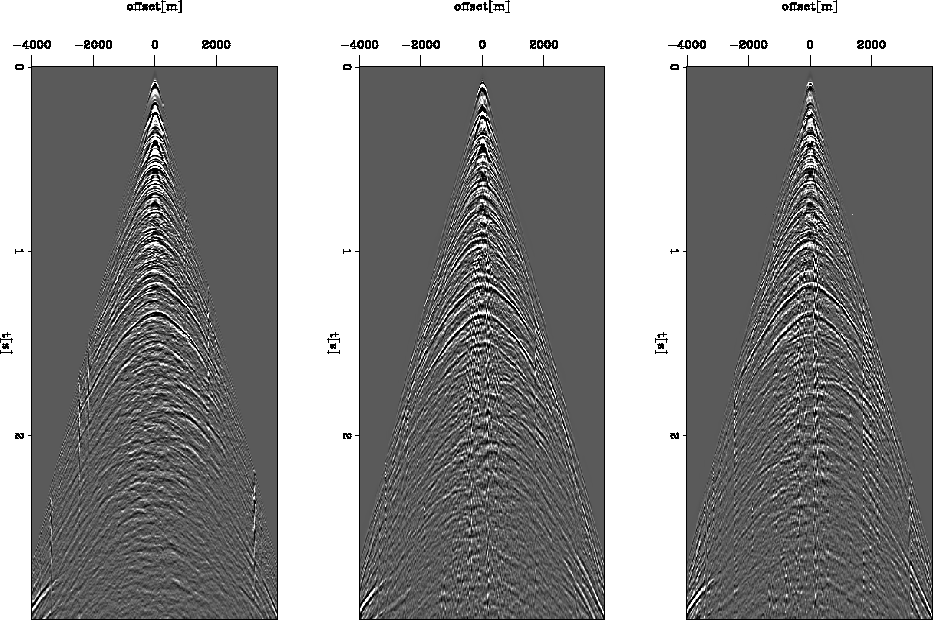The method that Barr and Sanders (1989) proposed to combine the hydrophone and geophone is simple and easy to implement. They simply add the hydrophone and the calibrated geophone in the shot domain. The calibrated geophone is computed with a constant factor equal to the ratio of the amplitudes of the hydrophone and geophone. We calculate a constant factor per trace, we average all of them, and finally apply the averaged constant factor to the entire shot gather.
This procedure not only calibrates the geophone but also eliminates the ghost reflection. The final combined signal (s(t)) is given by the following:
| |
(1) |
Figure 3 presents the physical model for this approach. Solving the boundary conditions for the elastic wave-equation at the water bottom (left panel on Figure 3) gives the amplitudes of the reverberations (right panel on Figure 3). This model explains that combining the hydrophone and the geophone components as in equation (1) results in a reverberation-free signal.
The right panel on Figure 3 also explains how to obtain the scale factor for equation (1). Comparing the amplitudes of the reverberations shows that the scale factor is just the absolute value of the ratio between the amplitudes of the hydrophone and the geophone. The final result, s(t), is a deghosted output.
 |
Figure 4 shows the result of this approach over the common-shot gather from Figure 1. Although it was possible to eliminate some of the multiples, the final result, s(t), is not totally multiple-free.
 |
![[*]](http://sepwww.stanford.edu/latex2html/movie.gif)